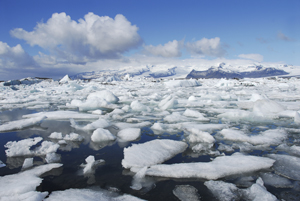
Australia must develop advanced nuclear power technologies and other carbon-free technologies if it is to tackle climate change and meet its growing energy needs, a CEDA audience in Adelaide has heard.
Experts at the forum said Australia needs to be serious about finding cost-effective alternatives to fossil fuels to stem its rising carbon emissions.
Eminent climate change scientist, Professor Chris Rapley said despite media claims that scientists were divided over climate change and its implications, scientists agree:
- The world is warming;
- Global warming is mainly due to human use of polluting fossil fuels; and
- It matters because the stable climate system of the past 10,000 years is becoming more volatile, causing droughts and extreme weather conditions and placing pressure on food prices.
Ocean levels - acting as a thermometer by rising in response to increasing atmospheric temperatures - and melting Polar regions clearly indicates global warming, Professor Rapley said.
"We've increased the carbon dioxide on the planet by approximately 40 per cent in 100 years," he said.
"There is evidence that (the Earth) hasn't visited this level of carbon dioxide in the atmosphere for 30 million years so we've done something in 100 years, 100 times faster than the planet naturally does, which is quite dramatic."
Professor Rapley said while former US Vice President Al Gore's movie, An Inconvenient Truth, predicted in 2006 that the arctic would be ice free in the summer within 50-60 years, new evidence suggested it might be ice free within the next 20 years.
Although governments had agreed that a carbon dioxide content of the atmosphere at 450 parts per million with a 50 per cent chance of a two degree warming was a sustainable level, the world's current emissions trajectory would reach 1000 parts per million by the end of the century and continue to climb, he said.
The world had reverted to using 19th century technologies, burning coal to meet its growing energy requirements as oil supplies dwindle, particularly in rapidly industrialising countries, he said.
The forum heard that efficiency interventions would get the world a third of the way to reducing human carbon emissions and would save money but techno-fixes would be required to meet the projected 350 per cent increase in global demand for electricity by 2060.
Environment Institute Australia, Director, Professor Barry Brook, said to achieve the 450 parts per million target, the world would need a 15-fold increase in the use of nuclear power globally and a 50-fold increase in the use of solar and wind energy in a 50-year period.
"Cost effectiveness is fundamental. All a carbon price does is potentially make these (low carbon technologies) slightly more cost competitive with fossil fuels," he said.
"What we really ought to be focusing most on is bringing down the cost of these alternative energies as much as possible.
"If we can get them ultimately as cheap, or cheaper, than fossil fuels even without a carbon price then, as long as they can do the same job, we've solved the problem."
Advanced nuclear power could produce a lifetime's supply of energy from a golf ball of uranium with little waste - equal to 3000 tonnes of coal producing 10,000 tonnes of carbon dioxide, he said.
Nuclear is one of the few technologies currently on the market that has the potential to become as cheap as, or cheaper than coal, he said.
"I'm predicting a future in which we can solve climate change and we can solve the problem of habitat destruction which causes biodiversity loss," he said.
"It's going to require energy for desalination or to produce food... we are not going to need less energy... what we need to be sure is that energy is cheap, it's zero carbon and it's sustainable."
Flinders University, Vice-Chancellor, Professor Michael Barber told the forum that while Australia and Canada had similar resource bases, economies and political systems, Canada appeared more committed to addressing climate change at the national and provincial levels and had embraced nuclear energy.
Two Canadian provinces, Quebec and British Columbia, had introduced a price on carbon and another, Alberta, had introduced an emissions trading scheme, he said.
While Australia's emissions were trending up, Canada's appeared to have peaked in 2007, he said.
"The developments in British Columbia and Quebec in regard to carbon pricing are heavily coloured by and respond to local values. As a result there is a sense they are making a difference at the local level and their economies are adjusting," he said.